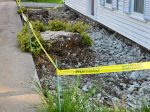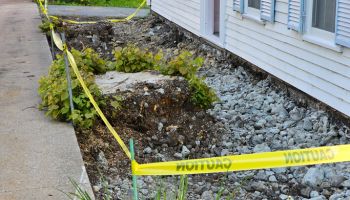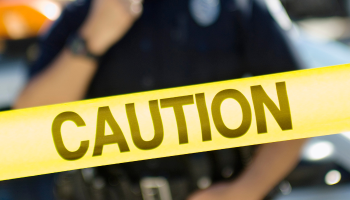U.S. authorities have discovered about 30 tons of marijuana that were part of a smuggling operation using a tunnel under the California-Mexico border, officials said Wednesday.
The 600-yard tunnel — which features a rail system, lighting and ventilation — connects a warehouse in Tijuana with one in the Otay Mesa industrial area of San Diego, said U.S. Immigration and Customs Enforcement spokeswoman Lauren Mack.
About 26 tons of marijuana had been transported through the tunnel to San Diego, and 10 of those tons were intercepted Tuesday by authorities as a tractor trailer was transporting the load from the Otay Mesa warehouse, officials said. About five tons were found by the Mexican military inside the Tijuana warehouse and the tunnel, officials said.
Drug cartels on the border have become so powerful and sophisticated in recent years that many Mexican communities and areas along the border are patches of uncontrollable violence, experts have said.
“It’s not a good day for the cartels,” said ICE director John Morton. “They now can’t move that size of drugs without digging a tunnel for 600 yards. It backfired on them.
Drug bust in tunnel: 30 tons of marijuana
“Obviously this is a cartel and organized drug smuggling of the highest order,” Morton added. Authorities weren’t able to identify Wednesday which cartel was behind the tunnel operation, he said.
The smuggling was active for about a month until this week’s seizure. The tunnel was rather small, and an individual can’t stand up in it, Morton said. He described the railway as “crude.”
The seizure was also unusual because authorities made their bust while the smuggling was active, Morton said.
“We caught them in the act,” Morton said. “We find these tunnels and they’re usually abandoned.”
The seizure was also one of the largest on the California-Mexican border, officials said.
“What’s unusual about this one is the amount of marijuana found as part of this investigation,” Mack said.
The 30 tons is considered significant by U.S. and Mexican authorities even though Mexican authorities seized 105 tons of marijuana in Tijuana last month, the largest Mexican bust in recent years, Mack said.
“So there’s been some pretty big drug busts,” she said. “We’re not letting our guard down.”
In the past four years, 75 smuggling tunnels have been discovered on the U.S.-Mexican border, most of them in California and Arizona, authorities said. In all, about 125 tunnels have been found since the early 1990s, when authorities began keeping count, with just one of them on the U.S.-Canadian border, Mack said.
Authorities will be investigating the owners of the Tijuana and San Diego warehouses, officials said.
A special U.S. border tunnel task force hunts for underground smuggling operations in and around San Diego. The task force consists of agents from ICE, the U.S. Drug Enforcement Administration and the U.S. Border Patrol, and they also work with Mexican authorities, Mack said.
In its surveillance of the Otay Mesa warehouse, the task force noticed suspicious activity Tuesday when they saw a tractor-trailer leave the facility. Agents followed the truck to a Border Patrol checkpoint at Temecula, California, and authorities found 10 tons of marijuana hidden in cardboard boxes on pallets, said ICE director John Morton.
A married couple driving the truck was arrested, he said.
The task force became the first of its kind in 2003, when it was assembled to deal with a growing number of underground smuggling routes on the California-Mexico border. The unit was also assembled as part of a post-September 11 security concerns, Mack said.
The longest tunnel discovered, found in 2006, had a length of seven football fields. That tunnel also connected warehouses in Otay Mesa and Tijuana.
The task force uses robots to scout out a newly discovered tunnel before agents are sent into it. Federal agents are trained like miners on how to negotiate confined spaces, and the San Diego-Mexico region is even used to test the latest ground-penetrating technology to detect tunnels, including by the U.S. military, Mack said.
The sophisticated tunnels — with lighting, oxygen pumps and rail lines — are typically used to ferry drugs from Mexico to the United States. The more rudimentary tunnels are just big enough to smuggle people into the country, Mack said.
“We’ve also been enjoying an unprecedented cooperation with Mexican law enforcement in recent years,” Mack said. “So we get a lot of information from the Mexicans, and vice versa















